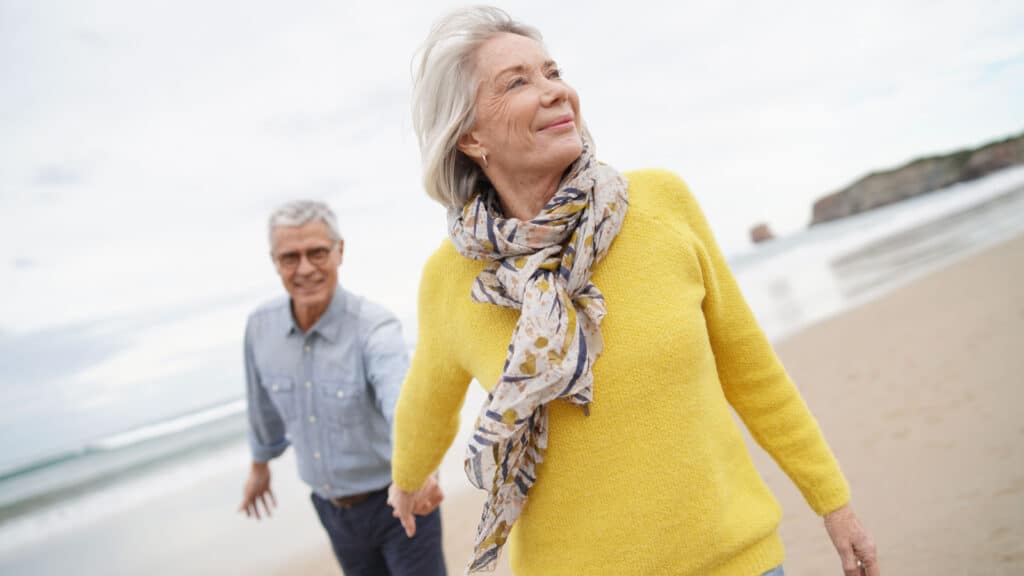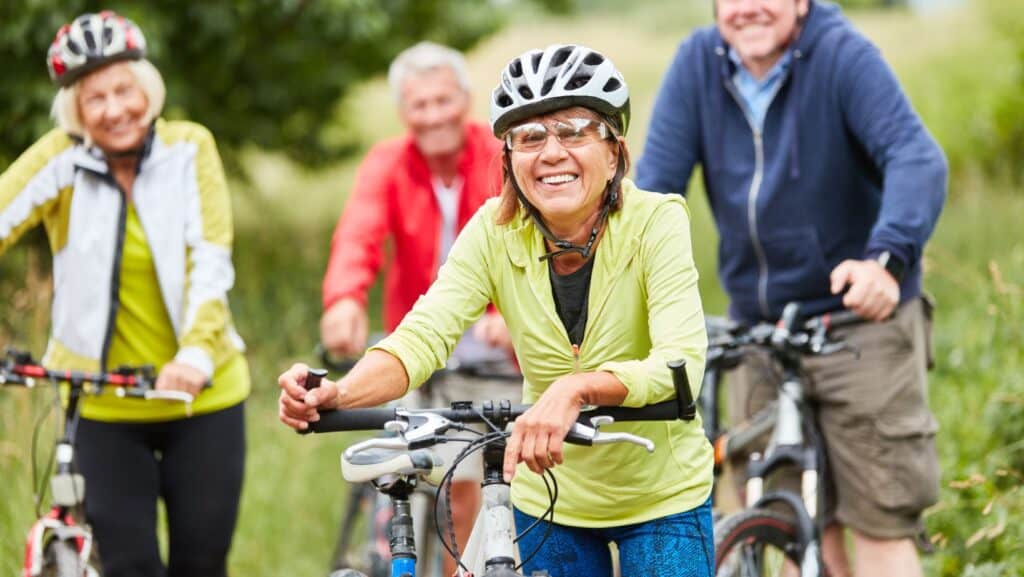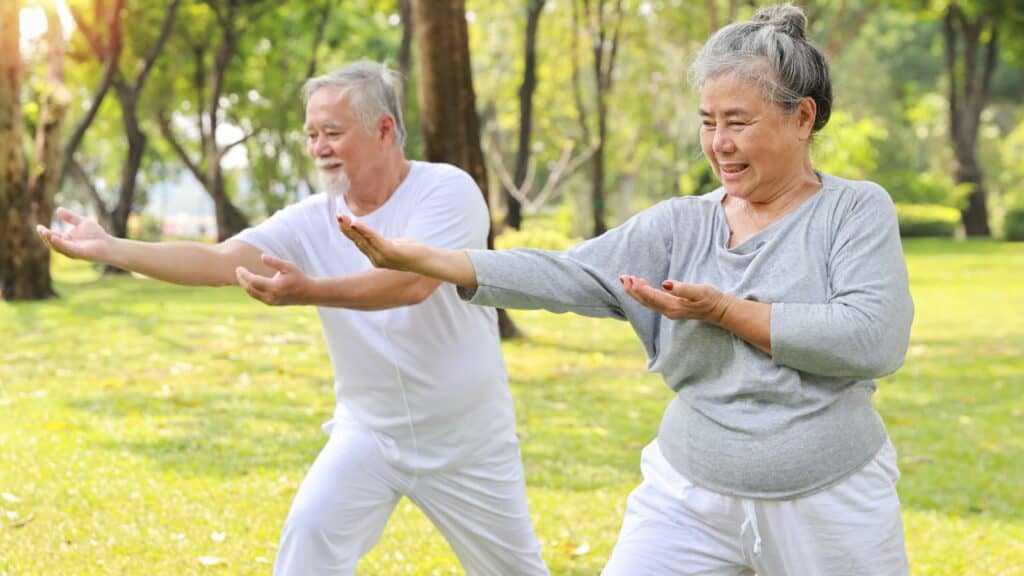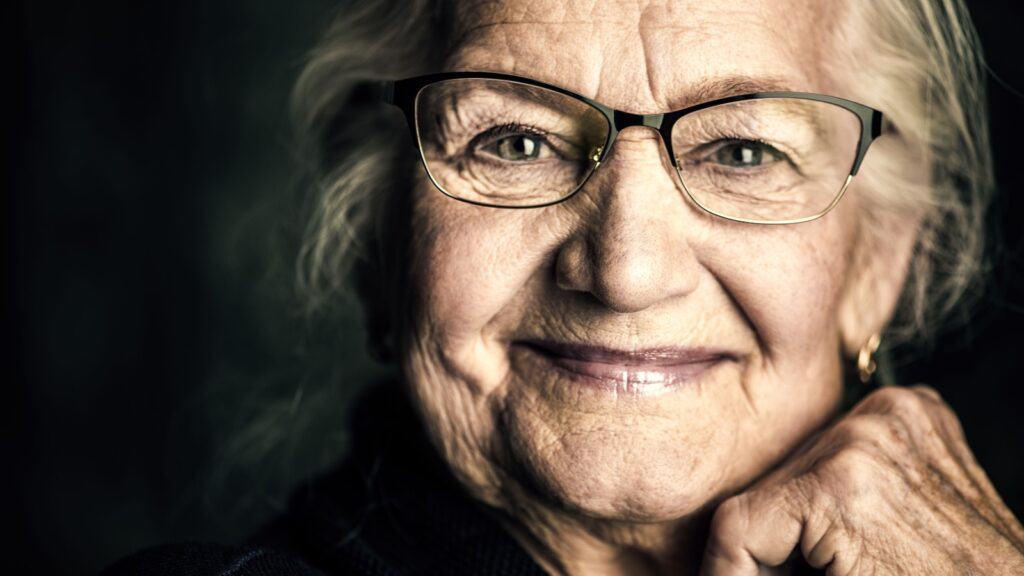Staying Active After 50: Smart Sports Choices for Later in Life
Back in the late 70s, when I was in my late teens, I used to roller skate. Not incidentally. I taught, I performed, I was sometimes on my skates 14 hours a day. I was good at it. Then after not skating for over 40 years, I decided to get back on my skates. I was excited at the idea, a bit anxious, and knew I needed to be safe.
I took it slowly, and even on day two of being back at the roller rink, some muscle memory came back, but there was much less flexibility and stamina. It got me thinking about other seniors who might want to get back to a sport, or to start a new one. Let’s look at how to do it right. (PS: roller skating is not one of the sports suggested for seniors).
Is It A Good Idea?

As people age, staying active becomes increasingly important for maintaining physical health, mental well-being, and social engagement. While many might feel hesitant about starting a new sport later in life or revisiting one that has been off the table for decades, it’s never too late to embrace a more active lifestyle. This article explores which sports are great choices for older adults, how to approach safely, and some of the obstacles that can arise along the way.
Why Take Up Sports Later in Life?

There are numerous benefits to staying physically active, regardless of age:
- Physical Health: Regular exercise helps to maintain or improve cardiovascular health, muscle strength, flexibility, and bone density, reducing the risk of chronic conditions like heart disease, diabetes, and osteoporosis.
- Mental Health: Physical activity releases endorphins, improving mood, reducing stress, and decreasing the risk of depression and anxiety. In addition, it promotes better cognitive function and memory.
- Social Connection: Participating in group sports offers an opportunity to meet new people, build friendships, and combat social isolation, which can become more common as people age.
Best Sports to Take Up Later in Life

When starting a sport later in life, it’s essential to choose activities that suit your physical abilities, interests, and goals. Roller skating did not make this list LOL. Here are some sports that are particularly well-suited for older adults:
Walking

Walking is perhaps the most accessible form of exercise. It requires no special equipment, can be done virtually anywhere, and can be tailored to any fitness level. For a challenge, consider joining a walking group or trying Nordic walking, which involves using poles for extra support and a full-body workout.
Swimming

Swimming is an excellent low-impact sport that’s gentle on the joints while providing a full-body workout. It improves cardiovascular fitness, strengthens muscles, and enhances flexibility. Many older adults appreciate that water offers natural resistance, making it easier to exercise without the stress on bones and joints.
Cycling

Whether on a stationary bike or a traditional bicycle, cycling is another low-impact option that builds cardiovascular endurance and strengthens leg muscles. For those concerned about balance, consider a recumbent bike or a stationary cycling class like spinning, which provides a great workout without the risk of falling.
Tennis or Pickleball

For those looking for a bit more excitement, tennis or its less strenuous cousin, pickleball, can be great choices. Pickleball has become especially popular among older adults because it involves less running and smaller court sizes while still providing a fun and competitive atmosphere.
Golf

Golf is ideal for older adults who want to stay active without high-intensity movement. Walking the course, swinging the clubs, and focusing on precision are great for mental stimulation and physical engagement. If mobility is a concern, many golf courses offer carts.
Yoga and Tai Chi

Both yoga and tai chi focus on flexibility, balance, and mindfulness, which are particularly important as we age. These practices improve muscle strength, reduce the risk of falls, and enhance mental well-being. Tai chi, often called “meditation in motion,” is especially beneficial for improving balance.
Bowling

Bowling is a social sport that gets you moving without being overly demanding. It promotes hand-eye coordination, provides light physical activity, and offers a great opportunity for fun in a group setting.
Rowing

Whether indoors on a rowing machine or outdoors on the water, rowing offers a full-body workout that’s easy on the joints. It strengthens the core, legs, and arms while improving cardiovascular health.
Safety Tips for Taking Up Sports Later in Life

Starting a new sport can be rewarding, but it’s important to take precautions to prevent injury and ensure long-term success. Here are key safety tips to consider:
Consult with a Healthcare Professional

Before starting any new exercise program, especially if you have preexisting medical conditions or haven’t been active in a while, consult your doctor. They can advise you on appropriate activities based on your health status and help identify any potential risks.
Start Slow and Build Gradually

Don’t rush into intense activity, especially if you’re new to a sport or have been inactive. Gradually increase the duration and intensity of your workouts. This will help prevent injury and allow your body time to adapt to new physical demands.
Warm Up and Cool Down

Always begin with a proper warm-up to prepare your muscles and joints for activity. Stretching and light movements can help prevent strains. After exercising, cool down with gentle stretching to aid recovery.
Invest in Proper Gear

Using the right equipment is essential for both performance and safety. For instance, if you’re taking up cycling, make sure your bike is properly adjusted to your height, and always wear a helmet. For tennis, wear supportive shoes to protect your feet and ankles.
Stay Hydrated and Listen to Your Body

As you age, your body’s ability to regulate temperature and manage hydration changes. Drink plenty of water, especially when engaging in outdoor sports. Pay attention to how your body feels, and don’t ignore pain. If something hurts or feels uncomfortable, take a break and consult a professional if necessary.
Consider Working with a Trainer or Instructor

Having a coach or trainer when starting out can help you learn proper techniques and prevent injury. Many fitness centers or community programs offer group classes designed for older adults, where instructors can modify exercises to meet your specific needs.
Overcoming Obstacles to Starting a Sport Later in Life

While the benefits of sports are clear, some challenges can arise when starting later in life. Here are common obstacles and ways to overcome them:
- Fear of Injury: Many older adults are concerned about injuring themselves. This is a valid concern, but by following safety guidelines, starting slowly, and choosing low-impact activities, you can significantly reduce the risk. If balance is an issue, activities like swimming or stationary cycling offer great alternatives.
- Physical Limitations: Health conditions like arthritis, joint pain, or reduced mobility can make certain activities difficult. However, many sports can be adapted to accommodate these limitations. For example, water aerobics is an excellent option for those with joint pain, as the buoyancy of water reduces the impact on the body.
- Mental Barriers: Some may feel self-conscious about starting a sport later in life, worrying they won’t be as good as others. Remember, physical activity is about personal health, not competition. Joining a beginner class or group specifically for older adults can create a more comfortable and encouraging environment.
- Time Constraints: For those who still work or care for family members, finding time for a new sport can be difficult. Scheduling regular exercise into your day, even if it’s just a short walk or stretching session, can help make physical activity part of your routine.
Conclusion

Taking up sports later in life offers numerous physical, mental, and social benefits, but it’s important to approach it with care. By choosing the right sport, starting gradually, and following safety precautions, older adults can enjoy a more active lifestyle while minimizing the risk of injury. Whether it’s walking, swimming, or yoga, there’s a sport for everyone, regardless of age. The key is to stay consistent, embrace the journey, and enjoy the process of staying healthy and engaged for years to come.
Science Tells Us What To Expect As We Age: Strategies For Thriving In Later Life

How does aging affect our bodies and minds, and how can we adapt to those differences? These are questions that pertain to us all. Aging gradually alters people over decades, a long period shaped by individuals’ economic and social circumstances, their behaviors, their neighborhoods, and other factors. Also, while people experience common physiological issues in later life, they don’t follow a well-charted, developmentally predetermined path. Let’s take a look at what science has told us to expect. Read: Science Tells Us What To Expect As We Age: Strategies For Thriving In Later Life
New to Fitness? Here’s How to Start Your Journey Without Feeling Overwhelmed!

Starting on a fitness journey can be intimidating, especially if you’ve never worked out before – or have had a long break away from the gym. The thought of stepping into a gym or even starting an exercise routine at home might seem overwhelming, but it doesn’t have to be. With the right mindset, a solid plan, and a focus on gradual progress, anyone can begin working out and build a healthier, more active lifestyle.
READ: New to Fitness? Here’s How to Start Your Journey Without Feeling Overwhelmed!
3 Simple Somatic Movements You Can Do To Calm Your Nervous System

Daily life can be unnerving. And it’s easy to go from calm to anxious or nervous in a flash. What’s harder is to go from anxious or nervous to calm.These simple movements that I am going to share here have been found to successfully move an individual from a state of anxious nervousness to a state of calm. Read: 3 Simple Somatic Movements You Can Do To Calm Your Nervous System
Join Us

Join us on this empowering journey as we explore, celebrate, and elevate “her story.” The Queen Zone is not just a platform; it’s a community where women from all walks of life can come together, share their experiences, and inspire one another. Welcome to a space where the female experience takes center stage. Sign up for our newsletter so you don’t miss a thing, Queen!







